In layman's terms, fossils are stones that are the remains or remains of creatures that lived in the distant past.
During the long geological time, countless creatures have lived on the earth. Many of the remains of these creatures after death or traces of their lives were buried by the sand at that time. In the following years, the organic matter in the remains of these organisms decomposed, and the hard parts such as shells, bones, branches and leaves, etc., together with the surrounding sediments, were petrified and turned into stones, but their original shape and structure (even Some subtle internal structures) are still retained; similarly, the traces left by those living creatures can also be preserved in this way. We call these petrified biological remains and remains fossils. By studying fossils, scientists can gradually understand the forms, structures, and types of organisms in the distant past, speculate on the origin, evolution, and development of organisms over hundreds of millions of years, and restore the earth's ecological environment at various stages in the long geological history.

Dinosaur--fossil remains
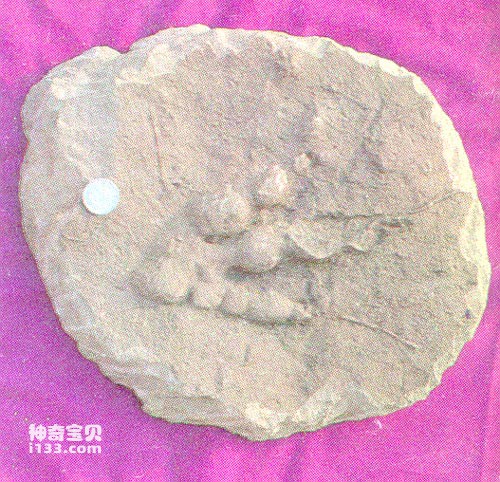
Dinosaur footprints - trace fossils
1. Preservation conditions and formation process of fossils
We already know that paleontological remains or relics from the geological historical period can be fossilized into fossils as a result of the diagenetic process of sediments over a long geological time. However, not all prehistoric creatures can form fossils. The formation process of fossils and their later preservation require certain special conditions.
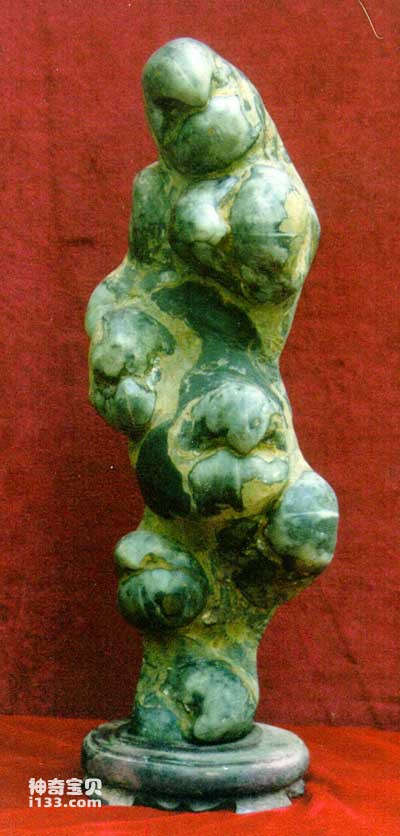
Owl oyster shell fossil
The formation and preservation of fossils first require certain biological conditions. Organisms with hard bodies are more likely to be preserved as fossils. Various shells among invertebrates and bones of vertebrates are mainly composed of minerals and can resist various damaging effects for a long time. In addition, organisms with cuticles, fibrous and chitinous films, such as plant leaves and body walls of graptolite, are easily damaged but are not easily dissolved and can be carbonized at high temperatures to become fossils. The soft bodies of animals such as internal organs and muscles are easily oxidized and corroded, and are difficult to preserve as fossils except under very special conditions.
The formation and preservation of fossils also require certain burial conditions. If an organism can be buried quickly after death, it has a greater chance of being preserved as a fossil. If biological remains are exposed to the surface for a long time or remain at the bottom of the water for a long time without being buried by sediment, they will be easily eaten by living animals or corroded by bacteria, and they will also be easily damaged by weathering, hydrodynamic effects, etc. Different buried sediments also vary in the likelihood and conditions of fossilization and preservation of organisms. If biological remains are buried in chemical sediments, biogenic sediments, and fine clastic sediments (referring to finer-grained sediments), they are less susceptible to damage during burial. But if buried by coarse clastic sediments (referring to sediments with coarser grains), they are easily destroyed by mechanical movement (rolling and friction of coarse clastics) during burial. Under special conditions, rosin wrapping and permafrost burial can even preserve intact paleontological software, providing scientists with more comprehensive and rich scientific research materials. This is the case for spiders in amber and mammoths in the Quaternary frozen soil. was preserved.
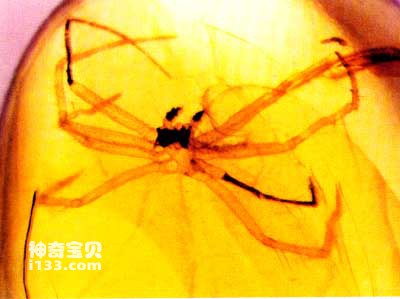
spider in amber
The time factor is also essential in the formation of fossils. Biological remains or their hard parts must undergo long-term burial before they can be petrified into fossils along with the diagenetic process of the surrounding sediments. Sometimes, although an organism is quickly buried after death, it is soon re-exposed due to various natural forces such as erosion, so it still cannot form a fossil.
The diagenesis of sediments also has a great influence on the formation and preservation of fossils. Generally speaking, the compaction and crystallization of sediments during the consolidation and diagenesis process will affect the formation and preservation of fossils. Among them, the compaction effect of clastic sediments is relatively significant, so few fossils in clastic sedimentary rocks can maintain their original three-dimensional state. The crystallization of chemical sediments in diagenesis often destroys the fine structure of biological remains. Especially deep diagenesis, metamorphism and recrystallization of high temperature and high pressure can cause fossils to be seriously damaged or even disappear completely.
2. Uses of fossils
We already know that fossils are the remains or remains of various organisms in distant geological historical periods. Therefore, fossils can more or less reflect the conditions of organisms and their living environment at that time, and also help humans understand the history and development of life. The history of ecological and environmental changes on Earth provides important clues.
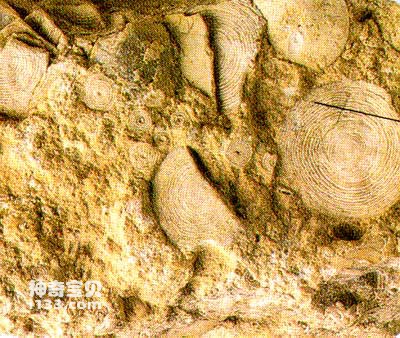
Foraminifera
At the turn of the 18th and 19th centuries, naturalists discovered through observation of fossils that the older the strata, the greater the difference in appearance between fossil organisms and modern organisms, while the younger the strata, the smaller the difference in appearance between fossil organisms and modern organisms. . This discovery directly inspired the emergence of the idea of biological evolution. Subsequently, generations of scientists have understood more and more clearly the genetic relationships between various categories of organisms based on the similarities and differences in their morphological characteristics through the study of more and more biological fossils that are constantly being discovered. On this basis, further research by scientists has given us a deeper understanding of the lifestyles, evolutionary laws and mechanisms of various ancient organisms.
Micropaleontology is a new branch of paleontology formed due to the rapid development of industry in the 20th century. The main research objects are those tiny fossil organisms, such as foraminifera, radiolaria, chitinas, ostracods, dinoflagellates and Phyla such as diatoms, as well as fossils of tiny organs from certain paleontological categories, such as conodonts, charophytes, and palynomorphs (spores and pollen of plants). Among them, the study of palynomorphs has special significance in classifying and comparing non-marine strata (that is, all other strata except marine strata) and studying paleoclimate, paleogeography and paleovegetation.
On the basis of fossil research, paleoecologists can study the relationship between paleontology and paleoenvironment to understand the lifestyle, living conditions, remains of life activities, the morphology and function of creatures and their organs, and the death of paleontology in various periods of geological history. issues such as the subsequent burial process and mechanism.
Theoretical paleontologists study a large amount of fossil data to explore the laws of biological evolution such as species formation, differentiation of categories, evolutionary methods, evolutionary rates and evolutionary mechanisms. Paleobiogeographers use comparative studies of a large number of fossil organisms to understand the geographical distribution of fauna and flora in various periods of geological history.

Fossil Collection—Giant Trilobite
In addition, research on edge disciplines such as biostratigraphy, molecular paleontology, paleobiochemistry, and paleobionics are also inseparable from paleontological fossils. It can be seen that all aspects of paleontology and scientific research in some related disciplines are inseparable from paleontological fossils. The uses of fossils are really great!
In addition to scientific research, fossils also have great aesthetic, cultural and social values. Many beautiful fossils are both natural heritage and natural works of art. Many ordinary people in developed countries abroad are fossil enthusiasts and collectors. By collecting fossils, they not only understand scientific knowledge such as natural history, but also play a role in cultivating their moral character and cultivating their sentiments. In recent years, with the development of my country's economy and people's lives With the improvement of the scientific level, a group of fossil enthusiasts and collectors have also emerged. Their activities not only have a certain effect in popularizing science, but also promote the development of paleontology to a great extent. For example, many of the world-shaking paleontological discoveries discovered in western Liaoning, my country, in recent years were initially more or less related to some fossil collectors. However, my country's current fossil collection market is still very unstandardized. Although private collections have played some positive roles in scientific research, they have also laid hidden dangers for indiscriminate mining and smuggling of precious fossils. Therefore, practical regulations and systems regarding the protection of precious fossils and the standardization of the fossil collection market must be sound.
The ancient ancestors of our country had some understanding of fossils thousands of years ago. In traditional Chinese medicine, fossils have always been used as a medicinal material - dragon bone, to treat certain diseases. But the mining and medicinal use of dragon bones does cause huge damage to precious fossil resources. In today's era of knowledge economy, we should realize that the scientific and humanistic values of fossils are far greater than their medical value; moreover, the medical functions that dragon bones can play have long been replaced by many newly invented pharmaceuticals. Therefore, it is time to It's time to kick Keel out of the medical profession.
3. What is a "living fossil"
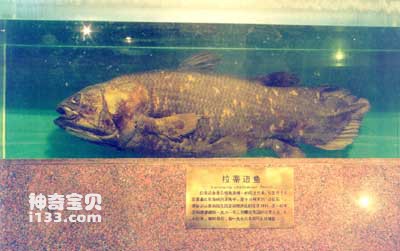
Latimer
We already know that fossils are the remains or remains of ancient creatures that lived in various periods of long geological history. Therefore, fossil creatures are almost all life forms that are different from modern creatures and more primitive than modern creatures.
However, not all living creatures in our modern ecosystem are "modern". Some organisms still survive tenaciously in this world, but their morphological structures, physiological and metabolic mechanisms, biochemical compositions, genetic lineages, and phylogenetic relationships have more or less retained many of the characteristics of primitive organisms. On the body, we can see the primitive state of some ancestral life forms, which provide us with a lot of information that can generally only be provided by fossils. Scientists vividly call such creatures "living fossils."
Our country’s rare animals and plants, such as metasequoia and panda, are living fossils that everyone is familiar with. If you come to our Chinese Paleontological Museum to take a look, there is also a more precious living fossil - Latimei fish. From its fleshy fin handles that connect the body and fins, you can imagine that there are more than 300 million pieces of it. Years ago, lobe-finned fishes tenaciously climbed onto land and evolved into amphibians.
animal tags: trilobites foraminifera
We created this article in conjunction with AI technology, then made sure it was fact-checked and edited by a Animals Top editor.